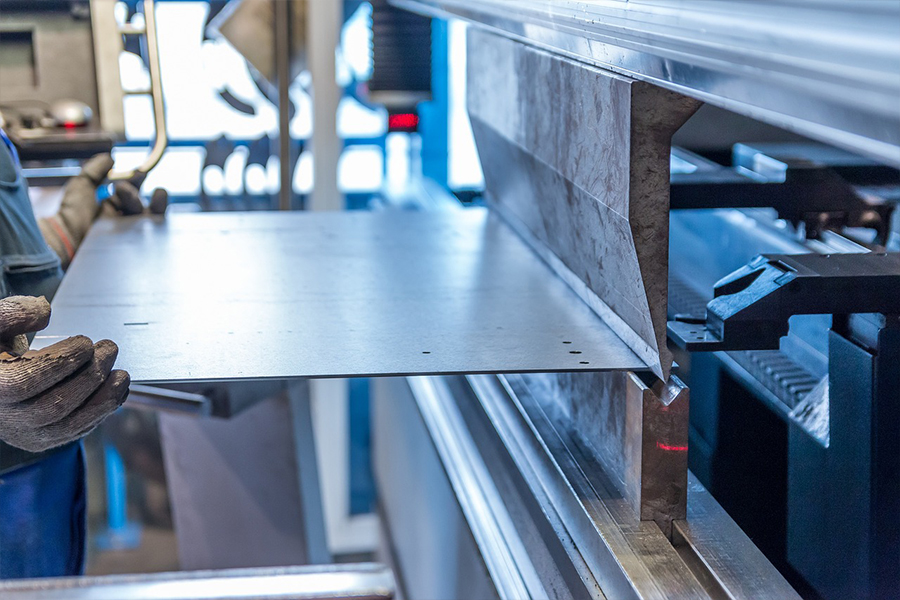Datetime:2025-06-14
Precision sheet metal processing is a key technology for achieving efficient production of complex parts in modern manufacturing. Its core lies in converting metal sheets into high-precision structural parts through precision processes. This article focuses on the three core processes of laser cutting, CNC stamping and bending forming, and analyzes the differentiated requirements for processing accuracy in different industries (such as aerospace, automobile manufacturing and electronic equipment). At the same time, it explores how to achieve micron-level tolerance control through parameter optimization and equipment collaboration, and analyzes the role of automated production systems in improving efficiency and consistency. The article will also combine the international quality standard ISO 2768-MK to explain the quality assurance logic of the entire process from raw material selection to finished product inspection, and build a complete precision processing technology cognitive framework for readers.
Core technology of precision sheet metal processing
The core of precision sheet metal processing lies in the precise control of material deformation. Laser cutting achieves micron-level incisions through high-energy beams. Its accuracy depends on the coordinated operation of the temperature control system and dynamic positioning technology, and the cutting error can be controlled within ±0.05 mm. The CNC stamping link adopts an intelligent parameter optimization algorithm to automatically match the stamping speed and pressure value according to the material thickness and strength to avoid edge deformation or cracks. The bending forming process uses 3D simulation software to predict the amount of material rebound, adjust the mold angle and pressure distribution in real time, and ensure that the one-time forming qualification rate of complex structural parts exceeds 98%. In the aerospace field, this technology can process ultra-thin titanium alloy cabins with a thickness of 0.3 mm; in automobile manufacturing, it is used to produce battery compartment seals with an error less than the diameter of a hair.

High-precision processing industry solutions
In the fields of aerospace, electronic equipment and automobile manufacturing, precision sheet metal processing solutions need to be customized according to the characteristics of different industries. For example, the processing of aircraft parts requires a balance between material lightweight and structural strength. Through the combination of laser cutting and CNC stamping, efficient forming of complex holes can be achieved on titanium alloy or aluminum alloy sheets. For the manufacture of electronic equipment shells, it is necessary to focus on solving the deformation control problem of ultra-thin sheets (0.3-1.0mm). The use of multi-axis linkage bending equipment with dynamic compensation algorithms can control the flatness error of the finished product within ±0.05mm. The automotive industry is more concerned about the stability of mass production. The automated production system monitors the punching pressure and mold wear status in real time to ensure that each batch of parts meets the ISO 2768-MK standard. These solutions are based on the systematic matching of material properties, equipment parameters and process routes. After actual production verification, they can meet the full process requirements from prototype trial production to large-scale mass production.
Micron-level tolerance control method
In precision sheet metal processing, achieving micron-level tolerance control requires coordinated optimization of equipment accuracy, process parameters and material properties. First, the processing equipment is dynamically calibrated by a high-precision laser interferometer to ensure that the positioning error of the cutting head or stamping die is less than ±5 microns. In view of the easy deformation of thin plate materials, a multi-axis linkage CNC system is used to compensate for the bending angle deviation in real time, and infrared thermal imaging technology is used to monitor the temperature changes in the processing area to reduce the impact of thermal expansion on the size. For example, in the processing of electronic equipment housings, the bending machine pressure value can be adjusted in advance by presetting the material rebound coefficient, and the final forming error can be controlled within ±0.02 mm. In addition, the introduction of an online measurement system can simultaneously detect key dimensions during the processing process, and automatically correct the processing path in combination with a closed-loop feedback mechanism to form a full-process precision guarantee chain from design to finished product.
Application of automated production systems
In modern precision sheet metal processing, automated equipment is becoming the core driving force for improving efficiency and precision. By integrating robotic arms, AGV automatic transport vehicles and intelligent warehousing systems, the production line can achieve continuous 24-hour operation while reducing the risk of errors caused by manual intervention. For example, in the manufacturing of automotive parts, the six-axis robotic arm can accurately complete the grasping and positioning of complex workpieces, and with the real-time data feedback of the laser cutting machine, the processing speed is increased by about 40% compared with the traditional mode. In addition, the intelligent visual inspection system captures the contour of the workpiece through a high-definition camera and can complete micron-level size comparison within 0.5 seconds to ensure that each batch of products meets the ISO 2768-MK tolerance standard. This full-process automation system not only shortens the production cycle, but also can quickly switch the processing program according to order requirements, meeting the flexible production requirements of the electronic equipment industry for multiple varieties and small batch orders.
With the continuous development of precision sheet metal processing technology, the coordinated application of core processes such as laser cutting, CNC stamping and bending forming is creating higher value for multiple industries. Whether it is the strict requirements for the strength of structural parts in the aerospace field or the precise requirements for lightweight components in automobile manufacturing, production efficiency and product consistency have been significantly improved through the deep integration of parameter optimization and automation systems. The maturity of micron-level tolerance control technology not only reduces material loss, but also ensures that products meet international standards through standardized quality inspection processes. In the future, with the further integration of smart sensors and real-time data analysis technology, precision sheet metal processing will evolve in a more efficient and environmentally friendly direction, injecting more possibilities into industrial manufacturing.